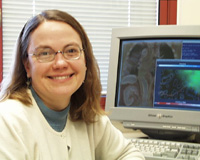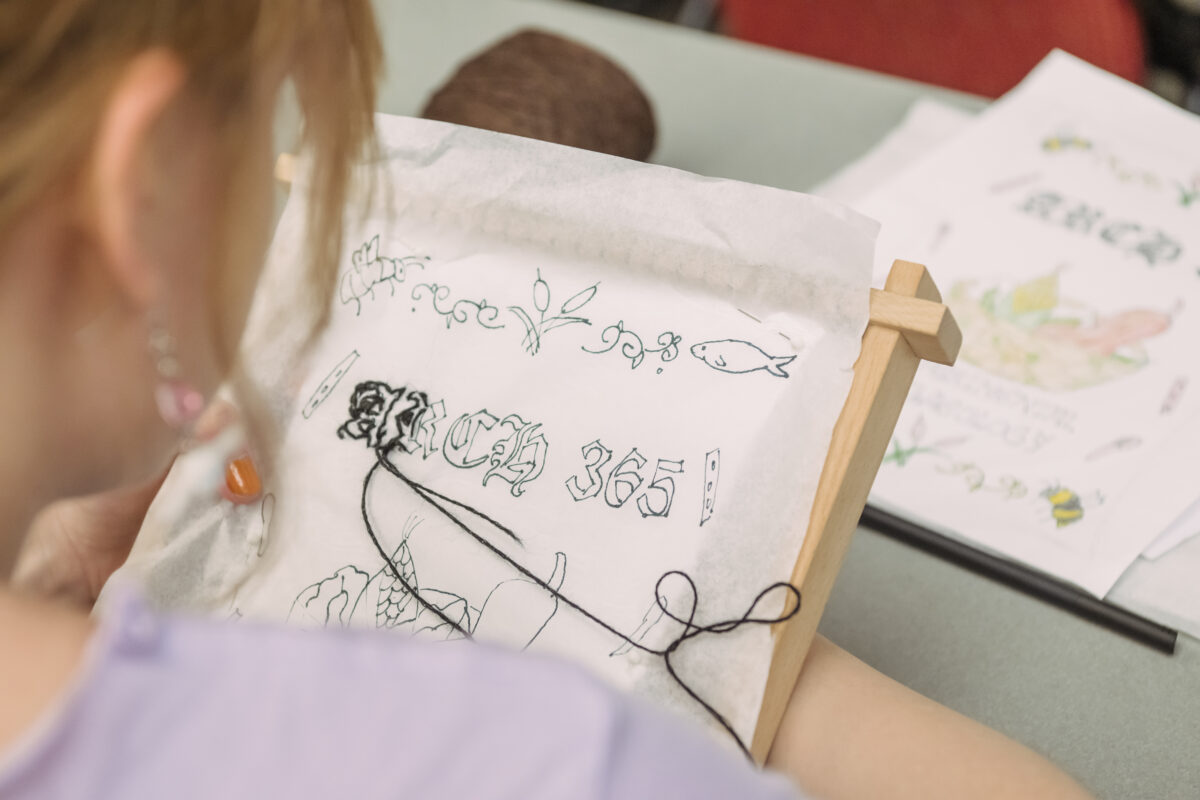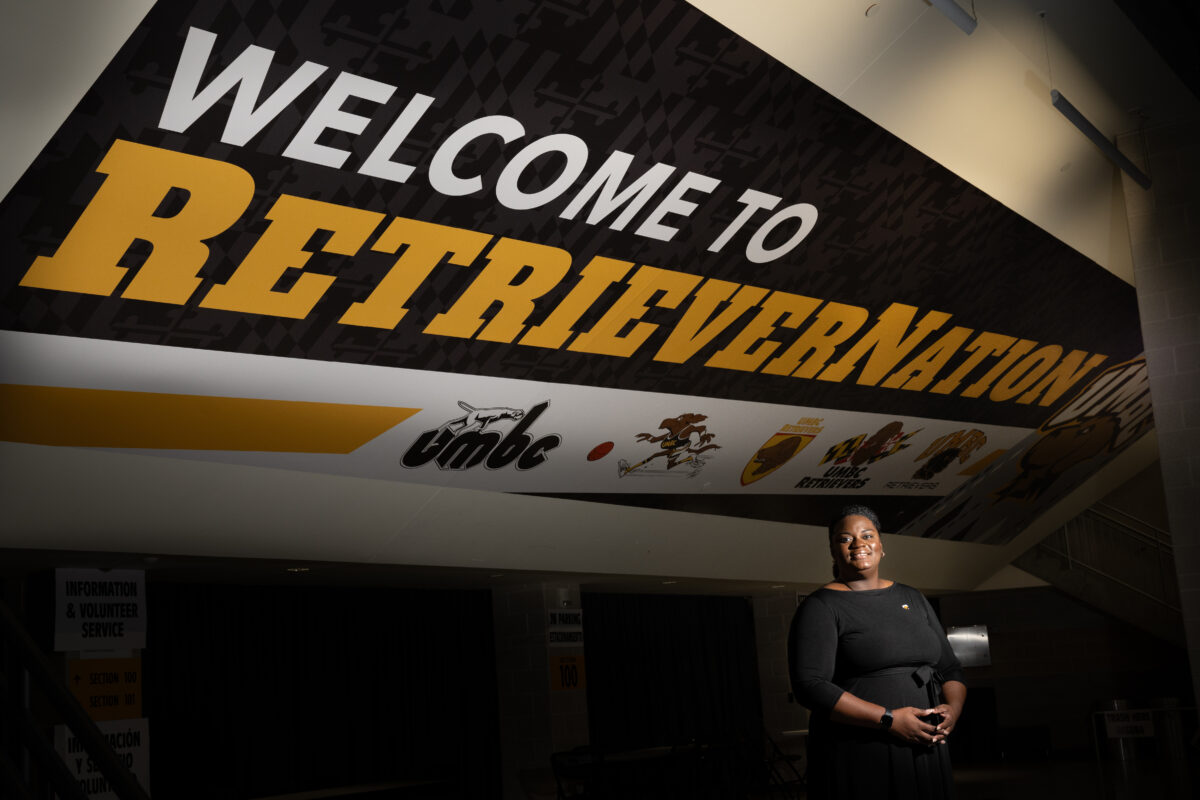![]()

CSEE Professor Penny Rheingans and her colleagues in the Graphics, Animation and Visualization Lab (GAVL) combine art and computer science.
The Art of Computer Science
UMBC Computer Science and Electrical Engineering assistant professor Penny Rheingans’ research combines the eye of an artist with the mind of a computer scientist to make complex data easier to understand visually.
“90 percent of the human brain responds in some way to visual stimuli,” Rheingans says. From CT scans for doctors to images of the ozone layer for climatologists, Rheingans’ specialty is making information from massive databases clearer and easier to use through colorful and often graceful visual images.
Rheingans, who has been researching and teaching at UMBC for five years, enjoys the interdisciplinary aspect of her work and getting to talk with the people in a wide variety of fields. “If you’re going to build a tool for someone, you must get to know what they’re going to do with it,” she says.
The bookshelves in Rheingans’ office are filled with art and technical illustration books as well as computer programming texts. “It’s interesting to me that anatomy textbooks use illustrations instead of photographs,” she says. “There are a lot of parallels between classic drawing or illustration and what we do with data visualization. I look at how artists use illustration principles and then try to automate them.”
Rheingans is currently involved in three research projects funded by the National Science Foundation (including a CAREER grant). She also collaborates on projects for the Department of Defense along with UMBC colleagues like Tim Oates, Charles Nicholas and Marie desJardins.
She also teaches several undergraduate and graduate courses, including one where students work for real-world clients like the U.S. Air Force, the National Library of Medicine and the techcenter@UMBC company Accelics.
“It’s very important early on for students to team up and try to solve real people’s problems,” Rheingans says.



